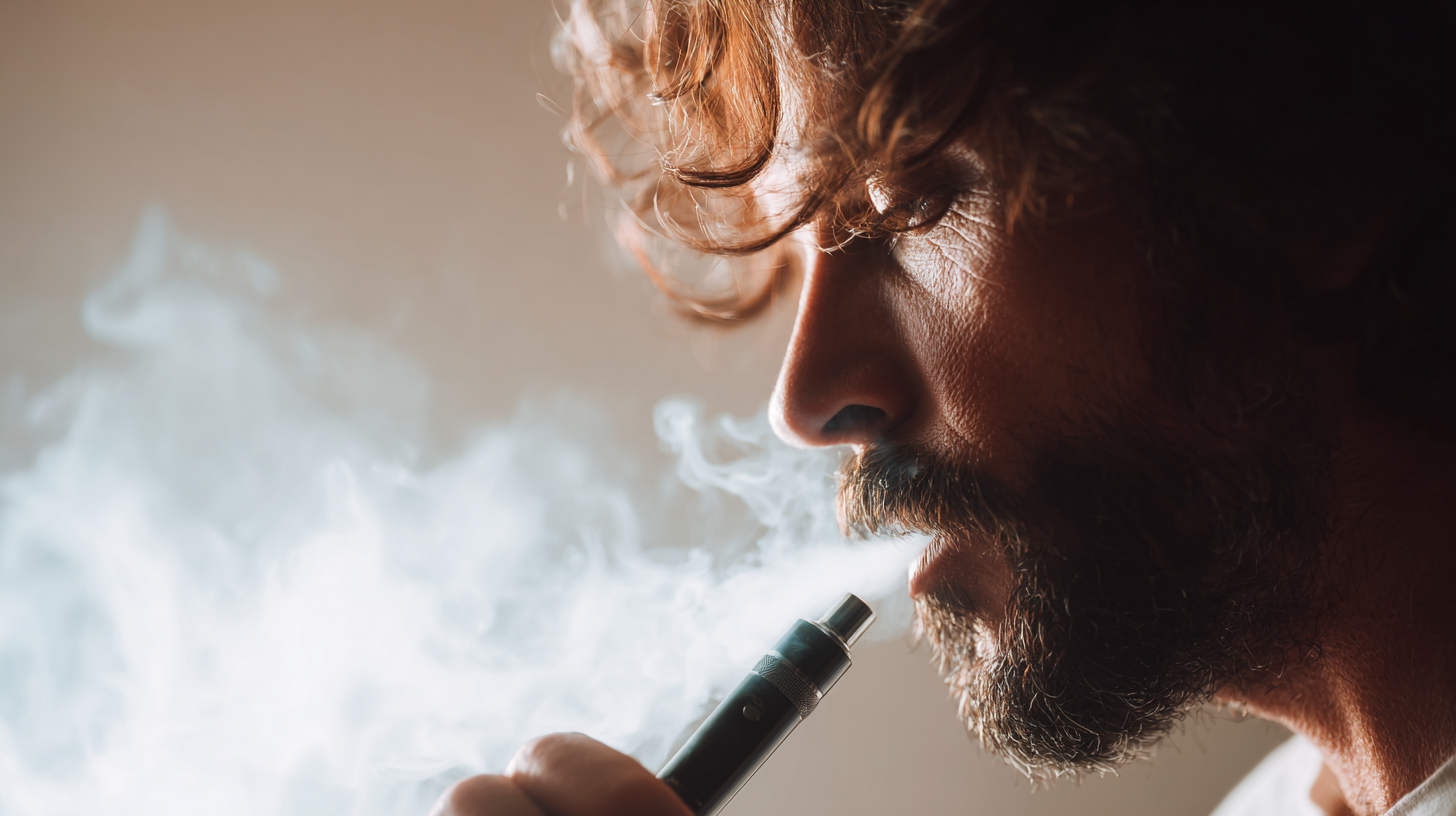Understanding the Evolution of Cigarette Vape Trends and Their Impact on Wellness
In recent years, the landscape of smoking alternatives has dramatically shifted, with "Cigarette Vape" emerging as a predominant choice among consumers. A 2021 report from the National Institute on Drug Abuse indicated that nearly 5% of high school students reported using e-cigarettes regularly, highlighting the increasing prevalence of vaping among youth. This trend raises essential questions about its impact on overall wellness and public health. According to the CDC, vaping-related illnesses surged in 2019, prompting a closer examination of the health implications associated with high-nicotine products. Furthermore, the global vape market is projected to reach $30 billion by 2025, reflecting a significant shift in consumer behavior and preferences. Understanding the evolution of these trends is crucial for both policymakers and health professionals as they navigate the complexities surrounding nicotine consumption and its implications for public health.

The Historical Shift: From Traditional Cigarettes to Vaping
The transition from traditional cigarettes to vaping represents a significant shift in smoking behavior over the past decade. In 2000, over 30% of adults in the U.S. smoked cigarettes; however, by 2020, this figure dropped to approximately 14%, according to the Centers for Disease Control and Prevention (CDC). This decline can be attributed to a surge in the popularity of electronic nicotine delivery systems (ENDS), with vaping devices capturing a considerable market share among smokers seeking alternatives.
A report by Grand View Research indicated that the global vape market is expected to reach USD 57.3 billion by 2027, indicating a robust growth trajectory. This industry shift is particularly notable among younger demographics, where vaping has become more prevalent. The 2021 National Youth Tobacco Survey reported that 19.6% of high school students had vaped within the past month, highlighting the appeal of flavored products and the perception of vaping as a less harmful alternative to smoking traditional cigarettes. These trends underscore the need for comprehensive health education regarding the risks associated with vaping and its potential long-term effects on wellness.
Understanding the Evolution of Cigarette Vape Trends and Their Impact on Wellness
The Rise of Vape Technology: Innovations Driving Change
The rise of vape technology has propelled significant change within the smoking landscape, transforming how users engage with nicotine. Innovations in device design, such as pod systems and advanced e-liquid formulations, have made vaping more accessible and appealing. These technologies allow for customizable experiences, enabling users to adjust nicotine levels, flavors, and even device settings to suit personal preferences, thereby attracting a broader demographic, including those looking to quit traditional smoking.
Tips for navigating the sea of vape options include starting with a low nicotine level if you are new to vaping, gradually experimenting with different flavors to find what you enjoy, and choosing devices that offer easy handling for convenience. Additionally, keeping up with the latest vape technologies can help you make informed decisions about which products are safer and more enjoyable. Understanding the changing landscape of vape technology not only enhances user experience but also has implications for overall wellness, as more individuals seek healthier alternatives to smoking.

Demographic Trends: Who is Choosing Vaping Over Smoking?
As vaping continues to rise in popularity, demographic trends reveal crucial insights into who is choosing this method over traditional smoking. Primarily, younger generations, particularly teens and young adults, are increasingly embracing vaping as an alternative. This shift is often attributed to the perception that vaping is a less harmful option, as many believe it carries fewer health risks compared to conventional cigarettes. Additionally, the variety of flavors and the sleek designs of vape devices appeal to younger users, making vaping a trendy choice among this demographic.
On the other hand, older smokers are also transitioning to vaping, driven by a desire to quit smoking altogether. Many individuals in their 30s to 50s are seeking alternatives that can help reduce their nicotine intake while still providing a semblance of the smoking experience. Surveys show that a significant portion of this age group appreciates the customizable nature of vaping, allowing them to control their nicotine levels more effectively. Ultimately, the changing landscape of vape users underscores a growing awareness and consideration of wellness across various age groups, reflecting a broader shift in how society views smoking and its alternatives.
Health Implications: Understanding the Wellness Impact of Vaping
Vaping has rapidly gained popularity over the past decade, particularly among younger demographics. A report from the National Institute on Drug Abuse (NIDA) indicates that approximately 27.5% of high school students reported vaping in 2021, a significant increase from previous years. This trend is alarming given the potential health implications associated with e-cigarettes. Research shows that vaping can expose users to harmful substances, including nicotine, ultrafine particles, and volatile organic compounds, raising concerns about respiratory conditions and cardiovascular health.
Moreover, the long-term wellness impact of vaping is still under investigation, but initial findings suggest a correlation between vaping and increased incidences of lung-related issues. According to the American Lung Association, e-cigarettes can lead to chronic bronchitis and may exacerbate asthma symptoms. Additionally, a 2020 study in the journal Tobacco Control found that young adults who vape are more likely to transition to traditional tobacco smoking, further complicating the public health landscape. As vaping continues to evolve, understanding its health implications will be crucial in shaping effective prevention and intervention strategies in the realm of tobacco and wellness.

Regulatory Responses: How Authorities are Adapting to Vape Culture
As vaping continues to gain popularity, regulatory bodies worldwide are scrambling to catch up with the fast-evolving vape culture. Recent reports indicate that in 2022, around 21% of high school students in the United States were estimated to be regular vape users, highlighting the necessity for robust regulatory frameworks to address this public health concern. Authorities are responding by implementing stricter age verification processes and limiting the accessibility of flavored products, which are particularly appealing to younger users. The U.S. Food and Drug Administration (FDA) has also ramped up its efforts to require premarket authorization for new vaping products, fundamentally altering the landscape in which these products can enter the market.
Internationally, countries like the UK and Canada are establishing regulations that include product standards and marketing restrictions. The UK's Office for National Statistics reported that nearly 50% of former smokers in 2021 had switched to vaping, representing a significant shift in smoking cessation strategies. This trend presents both opportunities and challenges for regulatory authorities as they strive to balance harm reduction for adult smokers with protection for youth. By studying the changing dynamics of vape usage and its public health implications, regulators are adapting their policies to create a safer environment, ultimately aiming to mitigate the adverse health effects associated with vaping while promoting responsible use among adults.
Related Posts
-

Understanding Global Production Standards for the Best Clear Disposable Vapes
-

Unlocking the Healthier Alternatives of Cigarette Vape for Modern Smokers
-

Exploring the Future of Disposable Cartridge Vapes at the 138th Canton Fair in 2025: Industry Trends and Insights
-

7 Essential Tips for Choosing the Perfect Disposable Cake Vape Experience
-

Challenges Faced by Global Buyers in Sourcing Best Colors Disposable Vape Pens
-

Exploring the Differences: Ceramic Coil Vape Pods vs. Traditional Vape Pods